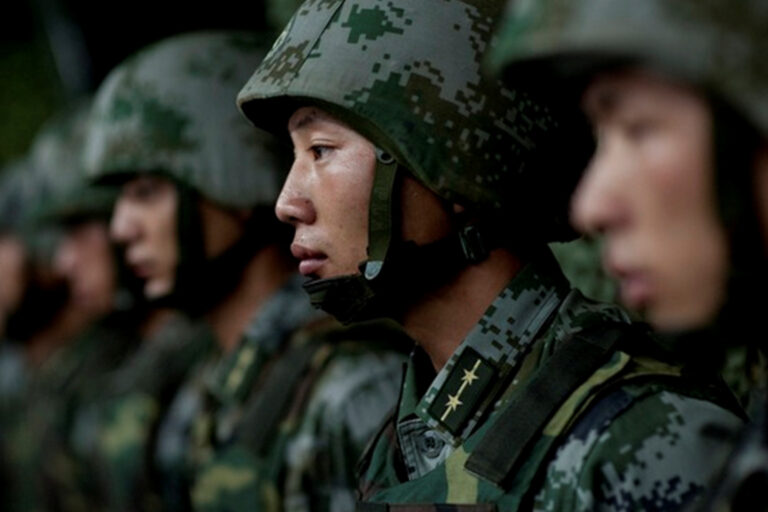by Tenzin Norgay
Prior to the nation-state paradigm becoming a norm for international relations, the ebb and flow of empires defined international relations and the extent of frontiers. The concept of a fixed national border and the state had not evolved yet. China, India and Tibet were no different. Following the collapse of imperial Tibet in the ninth century, the chaos of competing Mongol, Chinese, and British empires created overlapping notions of frontiers and allegiances of the people therein. How did this play out on the Asian scene with the end of western imperialism and colonialism in the mid-twentieth century? How did third world unity against imperialism and colonialism evolve in reality? What caused the famine in Tibet during this time period?
Sulmaan Wasif Khan, a professor at Tufts University, takes mid-twentieth century as the starting point to unravel the genesis of China’s modern foreign relations towards the world and South Asia in particular. He argues that the newly established People’s Republic of China’s (PRC) vision of third world unity and its then germinating policy towards South Asia was derailed by its weakness as a state in its borderlands. In consolidating its vast far west frontiers, China transitioned from empire-lite to empire-heavy. In contrast to Henry Kissinger’s description of China “less as a conventional nation-state than a natural phenomenon,” academicians like Khan and Carole McGranahan, a professor at the University of Colorado, describe China as an empire rather than Kissinger’s “a natural phenomenon.”[1] In recognizing the high degree of autonomy in the peripheries of Chinese empire prior to the mid-twentieth century, Khan employs the term empire-lite for China’s peripheral governance.[2] In the face of revolt in Tibet, Maoist China transitioned from the centuries old traditional model with a heavier control regime from Beijing towards an empire-heavy model.
Primarily based on declassified archives of the Foreign Ministry of the PRC, now reclassified, Khan weaves a gripping, fast-paced narrative around the Tibetan revolt of 1959 that jarred Maoist China’s security, in regard to both regime and national security.[3] In accentuating interrelatedness and the redundant dichotomy of domestic and foreign policies, Khan argues the universal significance of a local event in terms of a state’s foreign policy. Faced with a crisis on its Tibetan frontier, China completely abandoned its third world anti-imperialism coalition with a newly independent India. In unpacking policy formulations, Khan reveals the wide gap between a tenuous third world vision and practice of that vision. China’s anti-imperialist policy in reality led to hardening of its own imperial structure vis-a-vis the fourth world, a term for the frontier societies.
The non-state actors in the frontiers played both the roles of subject and object in evolving state policies. Allegiance of the frontier people cannot be commanded overnight. In navigating the melee ushered in by modern political flux, frontier people, roiling from statelessness, bore the brunt of coercive state policies. For the multiple identities underlining the genetic fluidity of identities and faiths transcending borders, Beijing’s ignorance of the people it purported to govern proved disconcerting for underpinning its writ. The central leaders knew little or nothing about the nomads, the Muslims, and the traders with transnational identities that peopled the frontiers. By taking advantage of the shallowness of state power on the ground, non-state actors deftly authored their own agency. Khan argues that the role of non-state actors and cultures in ungoverned spaces is as valid as that of state actors and high politics.
This book is a result of the author’s fascination with borderlands.[4] Mao’s China also shared the same fascination. Hinting at Maoist China’s encounter with the Tibetan plateau as a social exotica, the book opens with a young communist cadre being appalled to witness a Tibetan sky burial. Communist China’s genuine belief of liberating the “barbaric” Tibetans was shattered when the Tibetan resistance in a fragmented Tibet grew in numbers and strength in reaction to their “liberation” from imperialism and feudalism. The unrest that first brewed in 1955 in Tibet’s far east spilled into Lhasa and later to the west bordering Nepal and India, which resulted in Mao abandoning a gradualist policy for a more forceful policy of organizing Tibet into the PRC.[5]
This book not only reaffirms insights from previous scholarship but closes a significant knowledge gap.[6] The most remarkable insight Khan offers is his contention that the famine that swept across Tibet stemmed from the competing sovereigns’ political praxis in crafting border security policies for their unmanageable and porous frontiers. India and China, earnestly coopting the nation-state paradigm—which demands linear borders—both struggled to find where their borders were. This is new especially in the sinologists’ discourse. The common beliefs are that the famine in Tibet was either a result of Mao’s Great Leap Forward or simply as a result of ethnic cleansing.[7] Khan compellingly extirpates these perceptions. Because Tibet was not an agricultural society, the traditional trade with the subcontinent of salt and cashmere for grain fed Tibet. Khan argues that India’s persistence in linking an agreement for the renewal of trade to resolution of the border dispute and China’s competing prioritization of the frontier region as a question of national security led the people of the frontier to go hungry.[8] China in “the transition from empire-lite to empire-heavy cut off traffic—and thus food.”[9] The famine in Tibet was a collateral damage as the fourth world was caught up in the third world quagmire over national security.[10] By uncovering the international political cause of famine in Tibet, perpetuated by the failure of the Great Leap Forward, Khan augments agency of the non-state actors and the subaltern history overlooked in the study of high politics.
In an otherwise deeply researched book, the author offer several unsubstantiated speculations in connecting the perplexing dots. Khan’s implication of the Dalai Lama as an intelligence agent for China based only on his exchanging routine diplomatic notes with Premier Zhou Enlai is problematic.[11] It is pertinent to remember that in 1956 when the young Dalai Lama visited India—five years after the Lhasa-Beijing bilateral agreement and one year after unrest had started in Lhasa’s east—he was in cooperation with Mao to maintain the fragile peace in Sino-Tibetan relationship.[12] That cooperation failed and there is a plethora of literature detailing the failure. Khan is knowledgeable of this but chooses speculation over fact.
This relatively short book inspired by a spy novel genre—Tinker, Tailor, Soldier, Spy—is a welcome addition to the study of China’s foreign relations and the agency of non-state actors whose ancestral heritage and future is impacted depending on which side of the border they live. As Khan underlines, “[this book] offers anthropologists a case study in the problems of state formation and transnational movements…it offers geographers a close look at the attempts to draw boundaries in the Himalayas.”[13]
Tenzin Norgay is a Senior Fellow at the Tibet Policy Institute.
[1] Henry A. Kissinger, On China (New York: Penguin Press, 2001), 5.
[2] Sulmaan W. Khan, Muslim, Nomad, Trader, Spy: China’s Cold War and the People of the Tibetan Borderlands (Chapel Hill: The University of North Carolina Press, 2015), 3.
[3] For correlation between the Tibetan revolt and Maoist China’s regime security, see Martin T. Fravel, “Regime Insecurity and International Cooperation: Explaining China’s Compromises in Territorial Disputes,” International Security 30, no. 2 (2005): 46-83.
[4] “Muslim, Trader, Nomad, Spy: China’s Cold War and the People of the Tibetan Borderlands,” YouTube video, 1:02, posted by “American Historical Association Channel,” May 5, 2015, https://www.youtube.com/watch?v=GQz3dAQ7SQg.
[5] In regard to Mao’s Tibet policy, Melvyn Goldstein first termed the policy as a “gradualist policy.” For a Chinese perspective on Mao’s Tibet policy, see Jian Chen, “The Tibetan Rebellion of 1959 and China’s Changing Relations with India and the Soviet Union,” Journal of Cold War Studies 8, no. 3 (2006): 54-111.
[6] For distinguish scholars’ historiography of Tibet, see Melvyn C. Goldstein, A History of Modern Tibet, 3 vols. (Berkeley: University of California Press, 1989-2013). See also Tsering Shakya, The Dragon in the Land of Snows: A History of Modern Tibet Since 1947 (London: Pimlico, 1999).
[7]In fact, proper Tibet or central Tibet was excluded from the Great Leap Forward. However, eastern Tibet, as it was officially not considered part of Tibet, came under purview of the policy.
[8 ] Khan, Muslim, Nomad, Trader, Spy: China’s Cold War and the People of the Tibetan Borderlands, 113.
[9]Ibid., 111.
[10] Ibid.,114; Dawa Norbu, China’s Tibet Policy (Richmond, Surrey: Curzon Press, 2001): 297.
[11] Ibid., 25.
[12] For the Tibetan uprising in Lhasa’s east, see Tsering Shakya, The Dragon in the Land of Snows: A History of Modern Tibet Since 1947 (London: Pimlico, 1999): 136-144.
[13] Khan, Muslim, Nomad, Trader, Spy: China’s Cold War and the People of the Tibetan Borderlands, 6.



